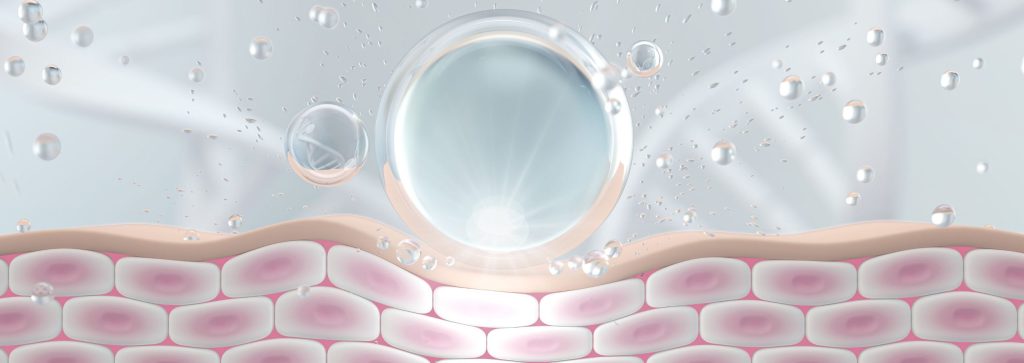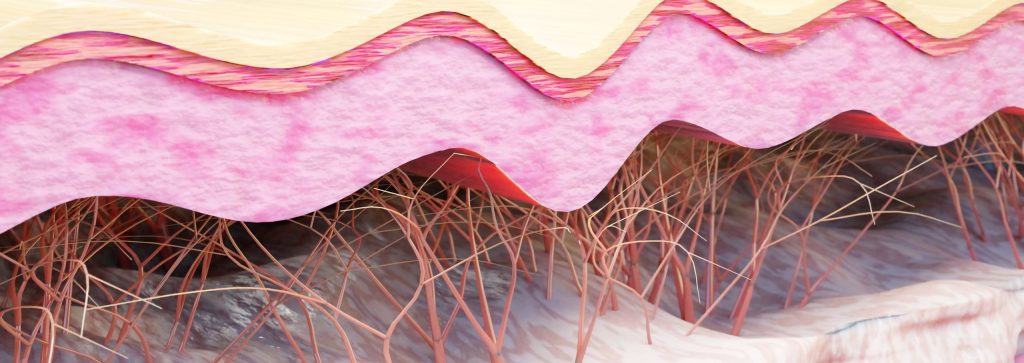Collagen is a vital protein that plays a crucial role in maintaining the structural integrity of various tissues in the human body. It is the most abundant protein, accounting for about 30% of the total protein content in our bodies. There are different types of collagen, each with its unique structure and function.

Type I Collagen
This type of collagen is the most abundant and widely distributed in the human body. It is found in various connective tissues, such as tendons, ligaments, bones, and skin. Type I collagen provides strength and support to these tissues, contributing to their overall stability and flexibility. Type I collagen is also an important component of blood vessels. Because it serves as a barrier and helps to regulate the flow of blood. It is also found in the cornea of the eye, where it provides strength and flexibility.
Type II Collagen
Type II collagen is primarily found in cartilage, which cushions and supports joints. It provides structural support and elasticity. Hence, helping to maintain the integrity and function of joints, such as the knees, elbows, and spine. Type II collagen is essential for proper joint mobility and flexibility. It is also important for bone growth and repair. Type II collagen helps to reduce inflammation and swelling associated with joint injuries.
Type III Collagen
This type of collagen is often found alongside type I collagen, especially in organs and tissues that require elasticity and flexibility. Type III Collagen is often found in muscles, organs, skin, blood vessels, and tendons, where it provides strength and flexibility. It also helps to hold cells together and provides structural support for tissues. This is present in blood vessels, muscles, and organs. It helps maintain the structural integrity of these organs and supports their normal function.
Type IV Collagen
Type IV collagen is a major component of the basement membrane, which forms a thin, flexible sheet-like structure that supports and separates different layers of tissues. It is found in the skin, kidneys, lungs, and various other organs. Type IV collagen provides a scaffold for cells, allowing them to adhere, migrate, and function properly. It is also involved in formation of blood vessels and serves as a barrier to prevent the passage of pathogens. Type IV collagen is an important component of the extracellular matrix, which helps to maintain tissue integrity and function.
Type V Collagen
This is found in smaller quantities compared to other types. But is still important for the proper functioning of various tissues. It is present in the skin, hair, and placenta. Type V collagen helps regulate the assembly and organization of other collagen types, contributing to tissue strength and stability.
Type V collagen is a crucial component of the extracellular matrix (ECM) in various tissues throughout the human body. This collagen type is primarily found in the skin, hair, and connective tissues, playing a vital role in maintaining the structural integrity and elasticity of these tissues. However, like other collagen types, Type V collagen is also subject to age-related changes, which can have significant implications for tissue function and overall health.
Declining Collagen

One of the key factors contributing to Type V collagen ageing is the gradual decline in fibroblast activity. Fibroblasts are specialized cells responsible for synthesizing and maintaining the ECM, including Type V collagen. With age, the number and activity of fibroblasts decrease, leading to a reduced production of Type V collagen. This reduction in collagen synthesis compromises the structural support in the skin and other tissues, leading to the formation of wrinkles and loss of elasticity.
In addition to decreased fibroblast activity, age-related changes in the composition and organization of Type V collagen fibers also contribute to collagen ageing. Cross-linking of collagen fibers increases with age, resulting in a stiffening of the ECM. This stiffening can impair the ability of collagen fibers to stretch and recoil, further compromising tissue elasticity and function.
Furthermore, chronic exposure to external factors such as UV radiation, pollution, and lifestyle choices like smoking can accelerate Type V collagen ageing. These factors induce oxidative stress, inflammation, and the production of destructive enzymes, which can break down collagen fibers and impair collagen synthesis. As a result, the skin becomes more susceptible to damage, leading to the appearance of fine lines and wrinkles.
To counteract Type V collagen ageing, various strategies can be employed. These include:
1. Maintaining a healthy lifestyle:
A balanced diet rich in antioxidants, regular exercise, and adequate hydration can help support collagen synthesis and protect against oxidative stress.
2. Protecting the skin from sun damage:
Applying sunscreen, wearing protective clothing, and seeking shade can minimize the harmful effects of UV radiation on collagen fibers.
3. Using topical treatments:
Skincare products containing ingredients like retinol, vitamin C, peptides, and hyaluronic acid can stimulate collagen production and improve the appearance of ageing skin.
4. Type VI Collagen:
Type VI collagen is mainly found in the extracellular matrix, a complex network of molecules that supports and protects cells. It is present in various connective tissues, including skin, tendons, and muscles. Type VI collagen helps anchor cells and provides structural support to these tissues.
Studies have suggested that type VI collagen may play a role in tissue repair and fibrosis. It has been found to accumulate at sites of tissue injury or inflammation, where it contributes to the formation of scar tissue. This process, although essential for wound healing, can lead to excessive collagen deposition and fibrosis in certain conditions. This excessive collagen deposition can lead to the formation of keloid scars. They are raised, thickened areas of skin that form around the site of an injury or wound.
In conclusion, collagen is a diverse group of proteins that play vital roles in maintaining the structural integrity and function of various tissues in the human body. Understanding the different types of collagen is crucial for comprehending the complex nature of our body’s connective tissues and their overall health.

Leave a Reply